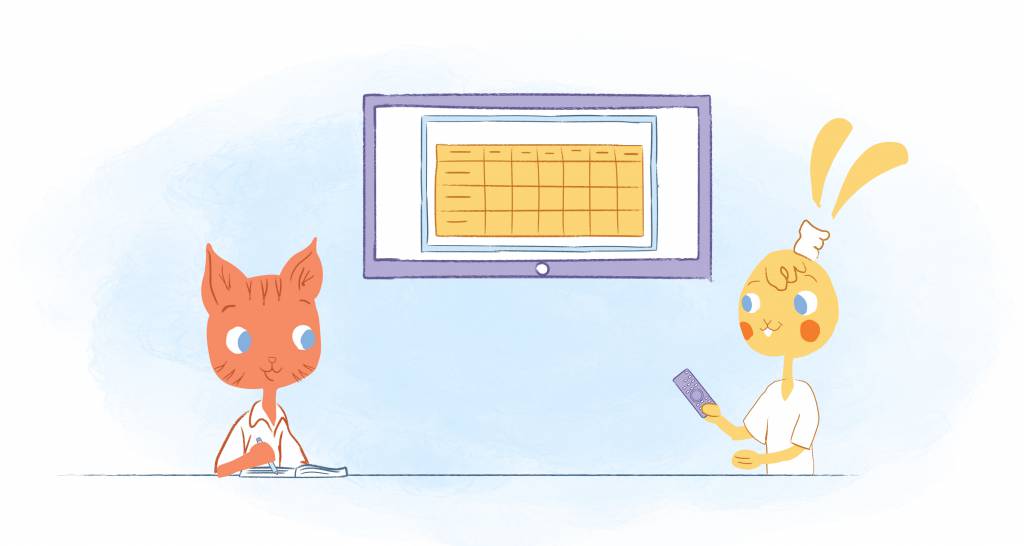

After high school, I wasn’t sure which path I would take career-wise. So, I bounced between several different jobs until I figured things. But, I was actually let go of one job because I expressed an interest in going back to school.
Did that mean I was ready to pack up and leave for a traditional four-year program? Nope. I was open to anything. But, most companies believed that I would leave them high and dry.
Years later, that still boggles my mind. Why wouldn’t you want your team to be as skilled and knowledgeable as possible? I feel that would give you an edge over your competitors while also boosting the productivity and engagement of your team.
And, while it may not seem like they are a part of your team, this also should apply to your crew of freelancers. I mean, by 2027, it’s anticipated that there will be 86.5 million people will be freelancing in the United States and will make up 50.9 percent of the total U.S. workforce. So, there’s an excellent chance that you’ll be increasingly relying on independent workers.
Now, I know what you’re thinking. So why are you obligated to provide continuing education to freelancers? Well, it ensures that their skills won’t become obsolete. As a result, they’ll be more effective and efficient.
Additionally, this can keep them more empowered, motivated, and loyal to you. Why? Because it shows them that they’re worth the investment — even if that means they’ll eventually move on. And that’s the key to building a successful team of freelancers.
But how can you actually provide continuing education for your freelancers? Well, here are five ways you can do just that.
1. Give them the gift of reading.
As Dr. Seuss once wrote, “The more that you read, the more things you will know. The more that you learn, the more places you’ll go.” And, truer words have never been spoken.
Reading has been found to;
- Strengthen the brain.
- Build vocabulary.
- Prevent cognitive decline.
- Reduce stress.
- Aid in sleep.
- Increase empathy.
So, how can you encourage your freelancers to read more often? Well, if your organization has a book club, you could invite them to join. Even if they reside in a different part of the country or world, they could still participate virtually.
Another idea? Gift them a monthly book membership with Book of the Month. You can either give them a 3, 6, or 12-month plan. Each month they get to select the book they wish to read. If you want to do this for your entire freelance team, there is a group gifting option with BOTM.
2. Encourage them to keep their skills fresh.
The pace of technological advancement has widened knowledge gaps over the last several years. Research shows a skill has a half-life of five years.
Why’s that a problem? First, the process of retraining employees is both time-consuming and resource-intensive. Consequently, 3 out of 4 hiring managers are unconvinced that hiring freelancers with the needed skills would be more efficient.
However, that’s still good news for freelancers or independent contractors. It turns out that they’re almost twice the likelihood of completing skills training in the last six months as employees.
But, why not give them a head start in keeping their skills fresh by giving them the gift of self-education via digital learning platforms?
Pay-per-course model.
Arguably, this is the preferred method for most online course marketplaces. And, for a good reason, as it’s fairly straightforward. Courses are purchased as needed by the students and are designed and hosted by individuals or instructors. In some cases, learners may receive a certificate of completion upon completion.
The major players in this field include Udemy, edX, and Udacity. Freelancers may find Udemy the most helpful since it offers more than 100,000 courses on every conceivable topic. Also, there’s less time commitment, and the course is theirs to keep. And, on your end, it’s probably the most affordable option.
Subscription-based model.
In essence, this is the Netflix model applied to e-learning, where in exchange for a monthly fee, students can access thousands of courses. Skillshare, Linkedin Learning, Pluralsight, and Lynda are some of the more well-known options.
Most online platforms offer college-style courses, but that’s not so with Skillshare. Instead, it’s more informal and aims to improve creative skills like writing, graphic design, or photography. Currently, the monthly cost is $32 (or $168 if you pay a year in advance). But, there are also plenty of free classes as well to explore.
MOOC platforms.
The vast majority of massive open online courses (MOOCs) are available to anyone. However, while most offerings are free, some will require you to pay for accreditation. What’s more, MOOCs are often run in association with universities to provide actual learning experiences.
Coursera, edX, and Khan Academy are perhaps the most popular MOOC platforms. Each has its own pros and cons, so freelancers should pay attention to certifications when taking these courses. However, the quality of the content in training you in a specific skill is still valuable, even when none of them are equivalent to actual degrees.
3. Help them get certified.
There’s no doubt that your freelancers are talented. After all, that’s why you hired them in the first place, right? However, if you want to help them build a more robust portfolio, earn more money, and stand out from other freelancers, then help them achieve certification.
Instead of just buying a random certification course, ask them what certification they would benefit most from. Ideally, this would be a course that helps them further expand on their existing skillsets. But, you may want to recommend introductory business courses that can help them with everything from managing their expenses to negotiating rates.
4. Have them attend in-person events.
“Although freelancing is largely a lonely road, our research found that the most successful freelancers (17 of the top 20 earners) are those who take advantage of the strength in numbers,” note Ben Laker, Lebene Soga, Yemisi Bolade-Ogunfodun, and Ashish Malik in HBR. So does this sound contrary to being a freelancer? Not exactly, as “going solo doesn’t necessarily mean you need to compete with others in your field.”
In short, the authors state, “Cooperation with other freelancers is a strategic way to stay ahead.”
“The advantages we found include group learning, as well as the ability to share market intelligence and upcoming opportunities,” they add. “To excel at this kind of group work, here’s what our findings” recommend;
Know the key players in your line of work.
“Eighty-five percent of the most successful freelancers we spoke to were part of online communities and meetups,” they report. “This helped them to know their potential pack hunters, and even share out potential gigs using game theory.”
On your end, suggest meaningful online communities or invite them to join invite-only communities. If you’re attending a local meetup, and they reside near you, have them tag along.
Furthermore, you could also offer to send them to in-person conferences and seminars. Besides learning new skills or perspectives, this also allows them to network face-to-face.
Build your tribe.
“We found that 65% of freelancers who teamed up got repeat jobs from the same client,” the authors add. “This retention rate was three times higher on average than freelancers who didn’t pack hunt.”
From personal experience, I’ve found it awkward to ask clients for testimonials, reviews, and potential referrals. While it’s a part of the freelancing game, you could go ahead and provide them with these before they even ask. However, as the proverb states, “Teach a Man To Fish, and You Feed Him for a Lifetime.”
Give them pointers to professionally ask for testimonials, reviews, and referrals. You could also offer to review their proposals or the correspondence on asking for testimonials.
Be visible in your community and establish your online presence.
Want other freelancers to find you? “A good way to start is by sharing information and learning from previous jobs online,” they suggest. “By so doing, you will be building social capital.”
Even if you aren’t familiar with this first-hand, you could connect them with other freelancers to show them how to build an online portfolio and network online.
5. Promote mico-and-nano learning.
With micro-and-nano learning, information is consumed in small chunks. Typically, this is between 2 and 15 minutes and focuses on one learning objective. In this way, targeted learning can be provided.
More importantly, this promotes “just in time” learning. That means your freelancers can access these learning resources whenever and wherever they prefer. Additionally, most of these materials are either free or low-cost, which is good for your wallet.
Some of the most prevalent mico-and-nano-learning examples include;
- Articles and white papers
- Software tutorials
- YouTube videos
- E-courses
- Podcasts
For the options that aren’t free, you may want to spring for the paid option. For instance, you could offer to pay for a premium Spotify account so that they can listen to relevant podcasts. Or, you could cover their subscription to an industry publication that keeps them up-to-date on the latest trends or stats.
Image Credit: Vlada Karpovich; Pexels; Thank you!











Albert Costill
My name is Albert Costill and I'm a content marketer at Calendar. If I can help people become more productive in my journey, even better. If you ever have a question about your Calendar or how you can use it - - don't hesitate to reach out. I'm a Calendar Pro.